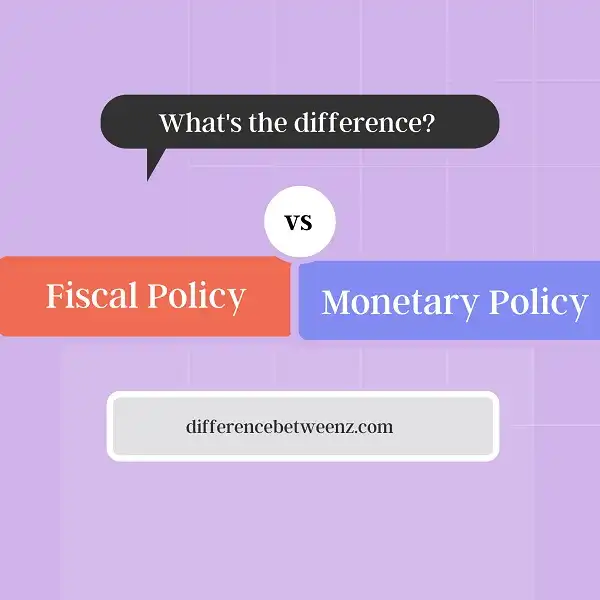The tools used by governments to manage the economy are fiscal and monetary policy. Fiscal policy is the use of government spending and taxation to manage economic growth, while monetary policy is the use of interest rates and money supply to manage inflation. While there are similarities between the two policies, there are also key differences. This blog post will explore those differences in more detail.
What is Fiscal Policy?
Fiscal policy is the use of government revenue and expenditure to influence the economy. Fiscal policy can be used to stabilize the economy in the short term or to achieve macroeconomic objectives like economic growth, full employment, and price stability in the long term. Fiscal policy is usually implemented by the government’s budget office, and it is typically set out in a nation’s annual budget. In times of economic hardship, fiscal policy can be used to increase government spending in order to stimulate demand and help businesses stay afloat. Conversely, when inflation is a concern, fiscal policy can be used to decrease government spending and increase taxes in order to cool down the economy. Fiscal policy is a powerful tool that can be used to promote economic stability and growth.
What is Monetary Policy?
Monetary policy is the process by which a central bank manages the money supply in an economy. The main tool of monetary policy is interest rates. By manipulating interest rates, central banks can influence inflation, employment, and economic growth. Monetary policy is used to stabilize the economy and keep inflation in check. When inflation is low, it encourages spending and investment, which can lead to economic growth. Conversely, when inflation is high, it discourages spending and leads to higher unemployment. Monetary policy can also be used to combat recessions. By lowering interest rates, central banks can encourage lending and investment, which can help to spur economic activity.
Difference between Fiscal and Monetary Policy
Fiscal and monetary policies are two tools that governments can use to manage the economy. Fiscal policy refers to government spending and taxation, while monetary policy refers to the actions of the central bank. Fiscal policy is mainly concerned with short-term economic growth, while monetary policy is mainly concerned with inflation and interest rates. Fiscal policy is conducted by the government, while monetary policy is conducted by the central bank. Fiscal policy can be expansionary or contractionary, while monetary policy is usually expansionary. Expansionary fiscal policy involves increasing government spending and/or reducing taxes, while contractionary fiscal policy involves reducing government spending and/or increasing taxes. Expansionary monetary policy involves lowering interest rates and increasing the money supply, while contractionary monetary policy involves raising interest rates and reducing the money supply.
Conclusion
Fiscal and Monetary Policy are two different ways that the government can intervene in the economy. The main difference between these policies is who they benefit from. Fiscal policy benefits taxpayers, while monetary policy benefits borrowers. There are pros and cons to both of these policies, but it’s important to understand the differences when making decisions about our economy.


